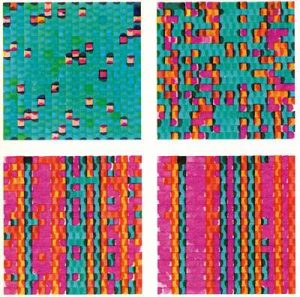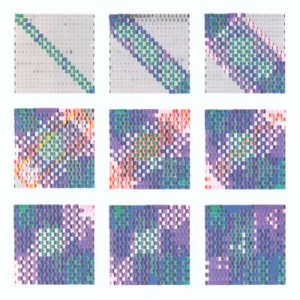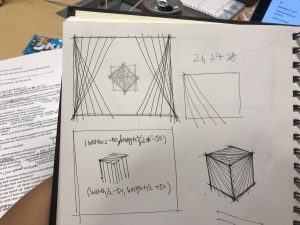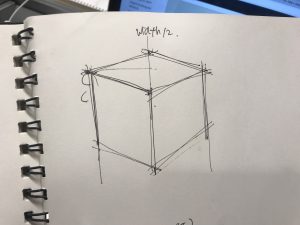//ryu kondrup
//rkondrup@andrew.cmu.edu
//Section D
//project-04-string-art
var shadow = 5;
var downDown = 30;
function setup() {
createCanvas(400, 300);
strokeWeight(1);
noFill();
}
function draw() {
background(0);
for (var i = 20; i < 400; i += 20) {
//line(i*1.2+120, 0, i/4-50, height);
//line(i*1.2+120, 0, i/20+200, height+200);
//line(i/20+200, height+200, 0, 0);
//red
stroke(255, 0, 0);
//big swoop
bezier(-100, height+1000,
i*.6, i+10, i*2, i*1.2,
width-i+100, height-i+100);
//small swoop
bezier(0, i*.2+downDown,
i*.2, i*.3+downDown,
i*1.7, i*1.6+downDown,
-100, height+1000+downDown);
//blue
stroke(0, 0, 255);
//big swoop
bezier(-100+shadow*.4, height+1000,
i*.6, i+10+shadow*.4, i*2, i*1.2,
width-i+100+shadow*.4, height-i+100);
//small swoop
bezier(0+shadow*.4, i*.2+downDown,
i*.2+shadow*.4, i*.3+downDown,
i*1.7+shadow*.4, i*1.6+downDown,
-100 + shadow*.6, height+1000+downDown);
//green
stroke(0, 255, 0)
//big swoop
bezier(-100 + shadow*.6, height+1000,
i*.6 + shadow*.6, i + 10,
i*2 + shadow*.6, i*1.2,
width-i + 100 + shadow, height - i + 100);
//small swoop
bezier(0 + shadow*.6, i*.2+downDown,
i*.2 + shadow*.6, i*.3+downDown,
i*1.7 + shadow*.6, i*1.6+downDown,
-100 + shadow*.6, height+1000+downDown);
}
}
In this project, I wanted to create something simple and abstract, but also explore different forms that can be made using curves inside of for loops. I also wanted to experiment with visual effects, so I offset each curve slightly and changed colors to RGB values to give the lines a sense of three-dimensionality and layering.
![[OLD FALL 2017] 15-104 • Introduction to Computing for Creative Practice](../../../../wp-content/uploads/2020/08/stop-banner.png)



